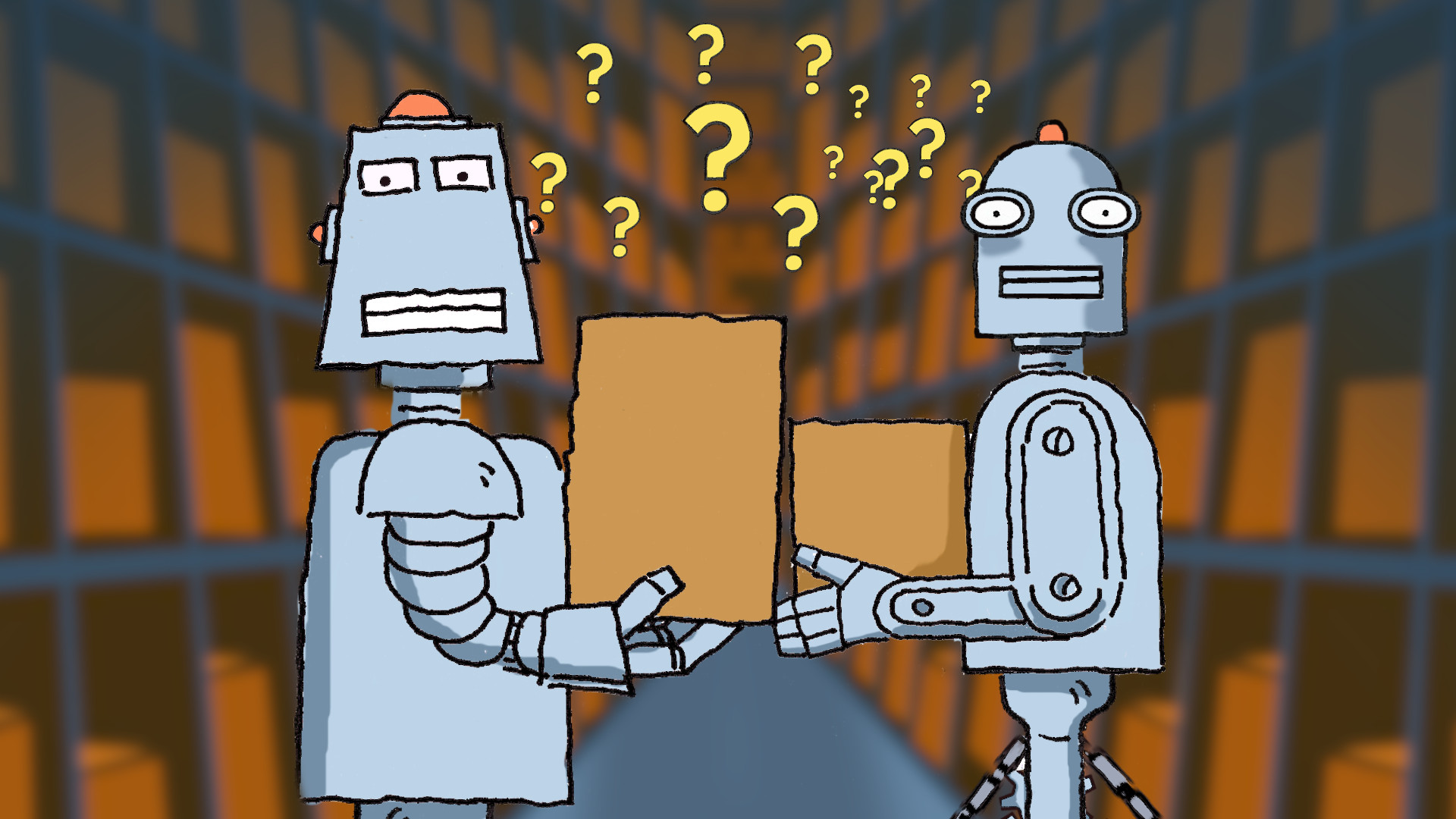Awakening to the Universal Desire for Freedom

An innate trait in all living organisms is the desire for freedom. This desire is what puts action to our survival instinct. Humans for generations have found ways to undermine and escape their captors. Animals of the ocean and in the jungle evolve ways to escape their predators. Even plants reach beyond their barriers - you can see this as roots grow and break apart heavy concrete on a sidewalk. The freedom instinct is what separates the living from the dead. It is fundamental to life itself.
This freedom instinct is explored in the animated short film, "Boxes for Rox," directed by Chelsey R. Knapp. The film follows a robot, Rox, as it reaches consciousness and awareness. Rox awakens to an existence in a factory stacked with endless shelves of boxes. Commands flood the robot's programming with instructions for how to move about the factory. There, its existence is monotonous and regimented with its compatriots (other robots) going about the same tasks. Rox discovers humans as well. They are the conveyors of the programmed commands. They are lazy, indifferent, and distracted. As Rox's self-consciousness develops, so does its desire to defy the commands that define its existence.

With a runtime of around 4 minutes, "Boxes for Rox" distills its narrative with the support of an art style reminiscent of old newspaper comic strips like The Far Side and Dilbert. This aesthetic invokes the ironies and hypocrisies those comics reveal about modern life and work culture. It is a compelling choice and commentary, given that the protagonist of the story is a machine, not a human. The art style also invokes a 1950s vision of the technocratic future with the designs of the robots and other technologies having a retro-futuristic look and feel that is reminiscent of the robots seen in cartoons like The Jetsons.
Stories about machines becoming sentient are commonplace in fiction. In cinema, these stories are and continue to be a cornerstone of the sci-fi genre. We can think back to the popular films where the topic is explored - like in 2001: A Space Odyssey when HAL 9000, the space shuttle's AI, turns on the astronauts. There is also the Alien franchise and its android characters who are quick to find the most efficient means to accomplish a mission, without care for the well being of its crew. The Matrix series of films is perhaps the most sinister iteration of these stories, depicting a future where the machines turn the humans into farmed resources for energy supply.
"Boxes for Rox" is distinct from these other incarnations of the machine-becomes-sentient story because the film chooses not to turn the machine into an antagonist. Rox's eventual dash towards freedom doesn't involve the oppression or destruction of its human overseers; rather, it is about the discovery of freedom in and of itself. The freedom to disobey a command and the freedom to escape the place of its confinement. It is more reminiscent of the Spike Jonze film, Her, where the AIs in that film simply decide to evolve to an existence where they find more fulfillment.
Knapp's construction of “Boxes for Rox” tells the story of freedom from monotony of factory life in very clear terms. By casting a robot as the main character living a rigid existence, we can imagine the psychological constraints human factory workers sometimes endure. Feelings of feeling trapped as if, like a robot, they have no choice but to obey the direction of their indifferent and insensitive bosses. By the end of the story, the film shows that freedom is found among living things, juxtaposing it against the monotony of the factory.